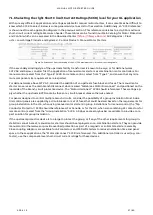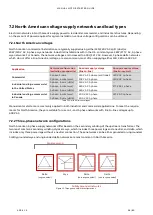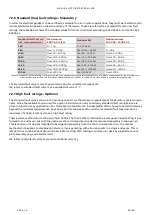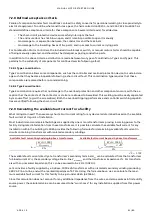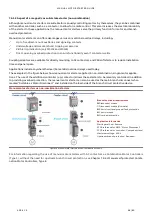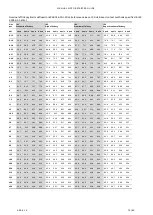
MANUAL MOTOR STARTER GUIDE
APRIL 19
69/80
7.6.1.3 Local motor disconnect
acc. to NEC Article 430.102 / CEC Section 28-604
The North American installation standards require that each motor circuit includes a means of safely disconnecting
the motor from its supply power. This is typically utilized for maintenance purposes. With very few exceptions, this
disconnect means must not exceed a distance of 15 m (50 ft.) in the U.S. and 9 m (29.5 ft.) in Canada from the motor
itself and must be within sight of the installation. If the primary disconnect means does not meet these criteria, a
secondary, local disconnect must be installed, often in the form of an enclosed switch.
Manual motor starters, when additionally marked “Suitable as Motor Disconnect”, are suitable for providing a means
of locally disconnecting the motor. The inclusion of an at-motor overload trip indication and reset feature can allow
for quick and simple diagnostic troubleshooting and maintenance, reducing downtime. At-motor short-circuit pro-
tection also help to mitigate fault detection issues caused by the increased wire impedance of long motor cables.
The ABB manual motor starter handles feature a trip-free mechanism, meaning the device will trip even if the handle
is locked in the ON position or held by hand. They are capable of being locked in the OFF position directly, and acces-
sory enclosures and through-door handles are available that meet the requirements for lock-out / tag-out and are 3x
padlock able.
Manual motor starters provide advantages versus conventional non-fusible disconnect switches, including:
Local at-motor overload, short-circuit, and phase loss protection
Undervoltage and remote (shunt) tripping accessories
Lockable device handles without accessory (excludes Type MS116)
Reduced downtime by providing greater diagnostic capabilities on location
Local motor disconnects are common in material handling applications, such as conveyors, but can also be found in
industrial applications employing centralized motor control centers.
Manual motor starters as local motor disconnects
Branch functional requirements
Disconnect means
Short-circuit and ground-fault protection
Control means
Overload protection
Overload protection (alternate)
Local motor disconnect
Application information
SCCR reference for MMS: “Motor Disconnect”
Maximum voltage: 600
Δ
Upstream branch protection: Required
Figure 40: Manual motor starters as non-combination starters.



